MSI MAG B650 Tomahawk WiFi in detail
The higher price of motherboards is one of the main topics around desktop PCs. Especially in the context of the AMD platform. However, if you decide to build your rig on DDR5 memory with the vision of a longer life expectancy, the B650 Tomahawk WiFi, in comparison to similarly equipped motherboards with Intel chipsets, is rather higher on the “price” scales and with a more attractive price/value ratio.
B650 chipset is still the cheapest for the latest generation of AMD motherboards. A cheaper variant (with slightly weaker features) is on the way, and later (at Computex) boards with the low-end A620 chipset will be introduced as well. By then, six different chipsets will already coexist on the market, but for now there are still four, and the tested MSI MAG B650 Tomahawk WiFi board uses the lowest-end of them, but with a level of features that’s still enough for most users.
Compared to boards with B650E chipsets, it does not support PCIe 5.0 interface for graphics card and even for SSD, but this also applies to the competing Intel B660 platform in this price range, which, in addition, compared to the B650 does not allow manual change of the CPU multiplier.
| Parameters | MSI MAG B650 Tomahawk WiFi | |
| Socket | AMD AM5 | |
| Chipset | AMD B650 | |
| Format | ATX (305 × 244 mm) | |
| CPU power delivery | 17-phase | |
| Supported memory (and max. frequency) | DDR5 (6600 MHz) | |
| Slots PCIe ×16 (+ PCIe ×1) | 2× (+ 1×) | |
| Centre of socket to first PCIe ×16 slot | 96 mm | |
| Centre of socket to first DIMM slot | 56 mm | |
| Storage connectors | 6× SATA III, 3× M.2 PCIe 4.0 (60–80 mm) | |
| PWM connectors for fans or AIO pump | 8× | |
| Internal USB ports | 1× 3.2 gen. 2 typ C, 4× 3.2 gen. 1 typ A, 4× 2.0 typ A | |
| Other internal connectors | 1× TPM, 2× ARGB LED (5 V), 2× RGB LED (12 V) | |
| POST display | no (but has debug LED) | |
| Buttons | Flash BIOS | |
| External USB ports | 2× 3.2 gen. 2×2 type A, 3× 3.2 gen. 2 type A, 4× 3.2 gen. 2 type A, 2× 2.0 type A | |
| Video outputs | 1× HDMI 2.1, 1× DisplayPort 1.4 | |
| Network | 1× RJ-45 (2,5 GbE) – Realtek RTL8125B, WiFi 6E (802.11 a/b/g/n/ac/ax), Bluetooth 5.2 | |
| Audio | Realtek ALC4080 (7.1) | |
| Other external connectors | – | |
| Suggested retail price | 252 EUR |
MSI MAG B650 Tomahawk WiFi
The Tomahawk range of motherboards in MSI’s range represents a kind of golden middle ground. And it could probably be said that in combination with cheaper chipsets (as opposed to, for example, the more expensive variants with Intel Z690 and Z790), they also contribute to achieving the best possible price/performance ratio in terms of the entire configuration.
There aren’t many cheaper options with features on par with the B650 Tomahawk WiFi. And with the ones that are, someone may be bothered by the use of an older Realtek ALC897 sound chip or a smaller format (mATX) with weaker connectivity. Still, the Gigabyte B650 Aorus Elite AX motherboard can be considered a noteworthy alternative. The latter will, as it happens, lose in some ways, but in others it will have the upper hand. Only a detailed analysis will show that.
The MSI MAG B650 Tomahawk WiFi is an ATX format motherboard (i.e. with the PCB measuring 305 × 244 mm) with three M.2 slots for 4.0 ×4 SSDs (60–80 mm) and three PCI Express slots. Two of these are long, full-fat (16 lanes are supported but only by the first one, only two lanes are brought out to the second one from the B650 chipset) and one short, single-lane one for connecting expansion cards, typically network, audio or USB controller cards. This is similar to other B650 boards that use the PCIe lanes from the chipset mainly for M.2 slots.
As part of the internal connectors, two 19-pins are also provided for connecting USB ports for front panels of cases. We’ve criticized some boards for manufacturers using only one (and thus making half of the USB connectors on the case unpluggable in some cases), but here they’re paired (that is, for four USB 3.2 gen. 1 ports) just like the USB 2.0 connectors. The fastest internal USB connector (10 Gb, 3.2 gen. 2 standard) is traditionally next to the 24-pin ATX connector.
With regard to compatibility with older coolers or RGB fans, there are also 4-pin RGB connectors for 12 V in the number of two. This hasn’t been the case for a while, but this older standard has made a comeback on motherboard PCBs. Naturally, 3-pin 5-volt connectors are also brought out to connect new components with RGB LEDs. There are also two of these.
The CPU power delivery is 17-phase (14+2+1), divided into three branches (Vcore, SOC, MISC). Its coolers are over 350 grams in total, and you can see from the profile the larger fins and thus the effort in these aluminum monoliths to achieve a larger surface area for more efficient cooling.
Under the heatsinks are Microchip MPS2210 voltage regulators designed for current capacity of up to 80 A. The total theoretical load capacity is thus 1280 A. However, it would be impossible to cool such a load and in practice it is counted on about a quarter of the load, at which a still decent efficiency is achieved. The PWM controller is MPS2223.
And then there is one more, smaller voltage regulator, which is unconventionally placed from the back side, close to the backplate of the socket. We don’t know exactly what it powers within the processor, but it’s separate because of the different voltage the manufacturer wanted to achieve. This voltage regulator no longer has its own heatsink and was the epicenter of the highest temperatures under high CPU load. This can also be seen in the thermal image, where we observed a higher surface temperature on the PCB than on the housing of the hottest voltage regulator from the Vcore part. The temperature of the MOSFET itself will be significantly higher than the measured 79 °C and it may or may not be the weakest point in the power delivery (the current load on this controller, despite the higher temperatures it can probably “withstand”, will not be all that high).
There are up to ten USB ports on the rear panel, one of which is lightning-fast – standard 3.2 gen. 2×2 Type-C and there are only two slow ones (2.0), just enough to connect a keyboard and mouse. The rest are a combination of 5- and 10-gigabit in a 4:3 ratio.
Because of the two video outputs HDMI (2.1) and DisplayPort (1.4), there’s good readiness for an APU as well. Those opposed to audio connector reduction (for example, on Gigabyte boards) will again appreciate the full-fledged assembly of five 3.5 mm jacks, which also includes an optical S/PDIF output. The networking options consist of a combination of an RJ-45 connector (Realtek RTL8125B) for wired connections and WiFi 6 with two SMA connectors for WiFi antennas.
This concludes the introduction of the partial features of the MSI MAG B650 Tomahawk WiFi motherboard, followed by a chapter with the UEFI analysis and then tests of all the key things.
- Contents
- MSI MAG B650 Tomahawk WiFi in detail
- What it looks like in the BIOS
- Methodology: Performance tests
- Methodology: How we measure power draw
- Methodology: Temperature and frequency measurements
- Test setup
- 3DMark
- Borderlands 3
- F1 2020
- Metro Exodus
- Shadow of the Tomb Raider
- Total War Saga: Troy
- PCMark and Geekbench
- Web performance
- 3D rendering: Cinebench, Blender, ...
- Video 1/2: Adobe Premiere Pro
- Video 2/2: DaVinci Resolve Studio
- Graphics effects: Adobe After Effects
- Video encoding
- Audio encoding
- Photos: Adobe Photoshop, Affinity Photo, ...
- (De)compression
- (De)encryption
- Numerical computing
- Simulations
- Memory and cache tests
- M.2 (SSD) slots speed
- USB ports speed
- Ethernet speed
- Power draw without power limits
- Power draw with power limits
- Achieved CPU clock speed
- CPU temperature
- VRM temperature – thermal imaging of Vcore and SOC
- SSD temperature
- Chipset temperature (south bridge)
- Conclusion





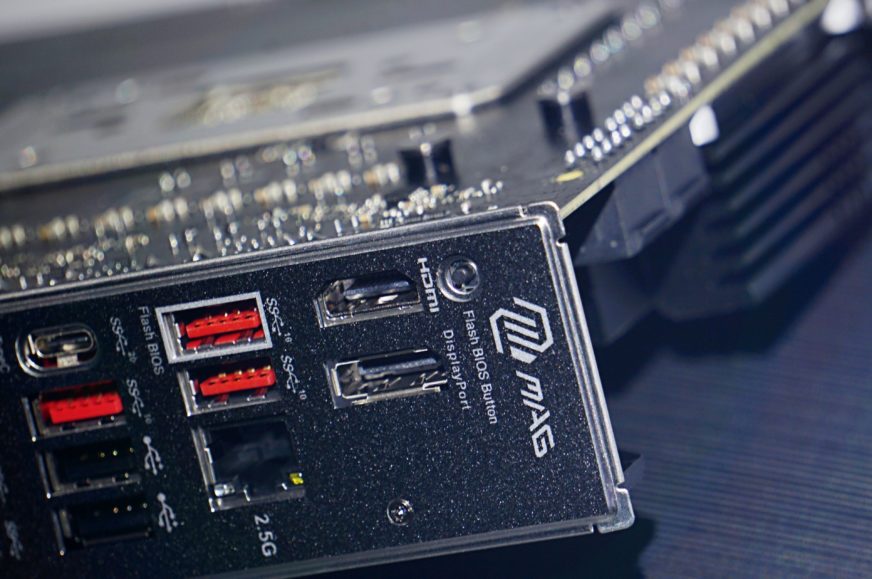
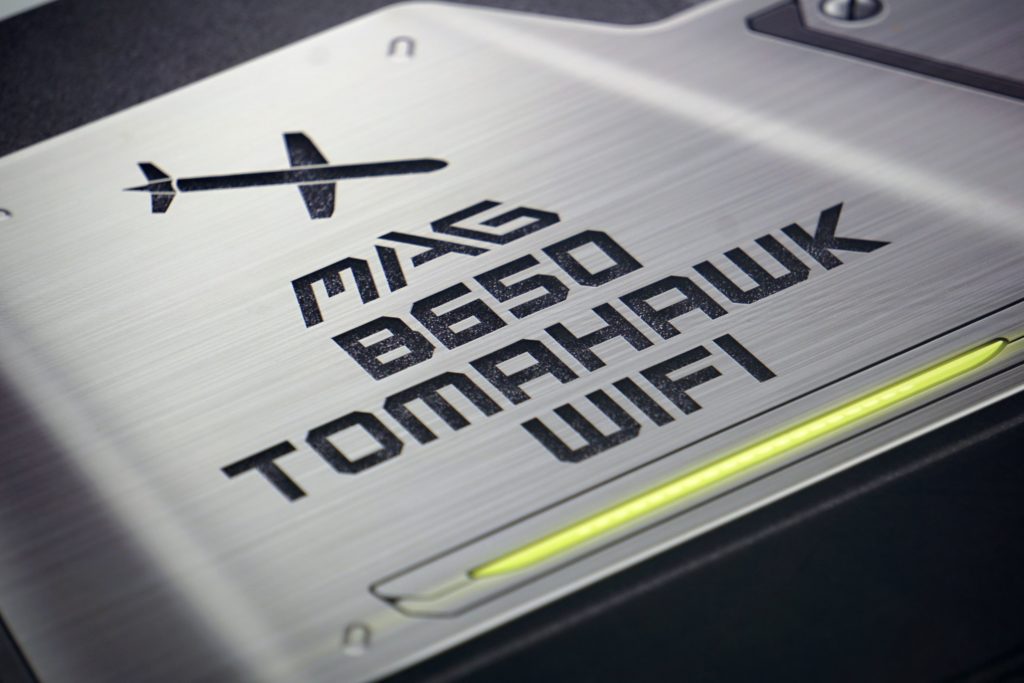
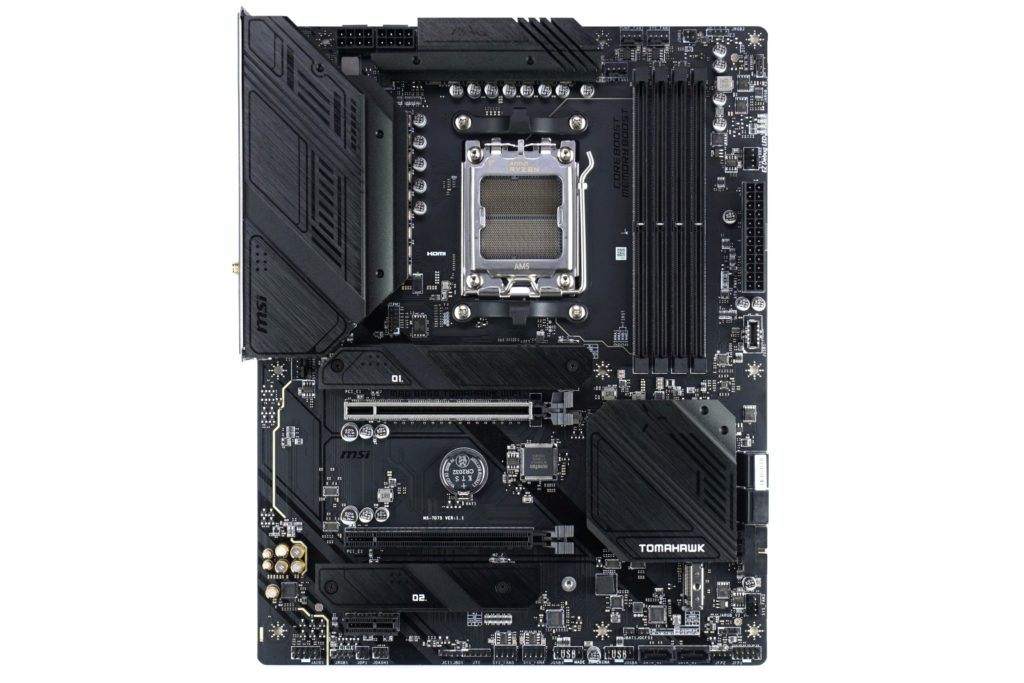
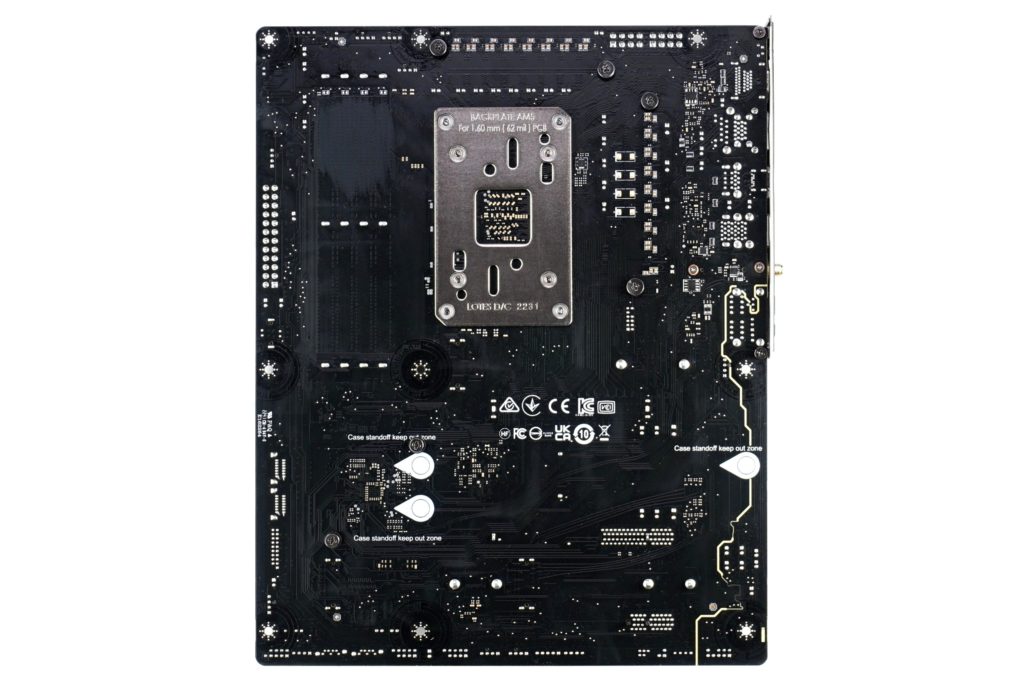
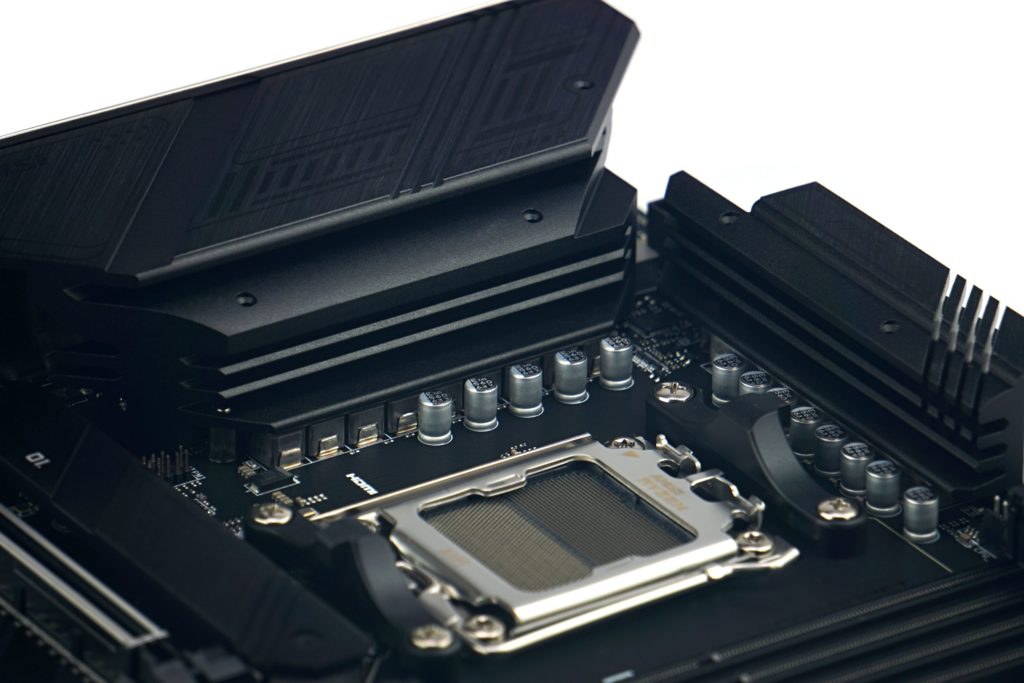
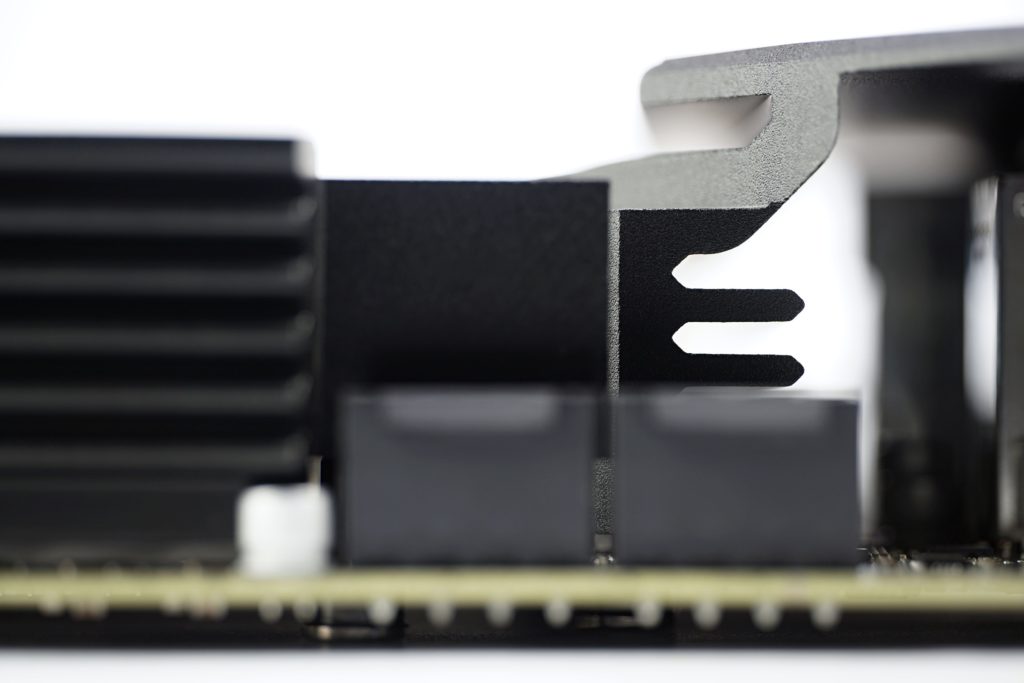
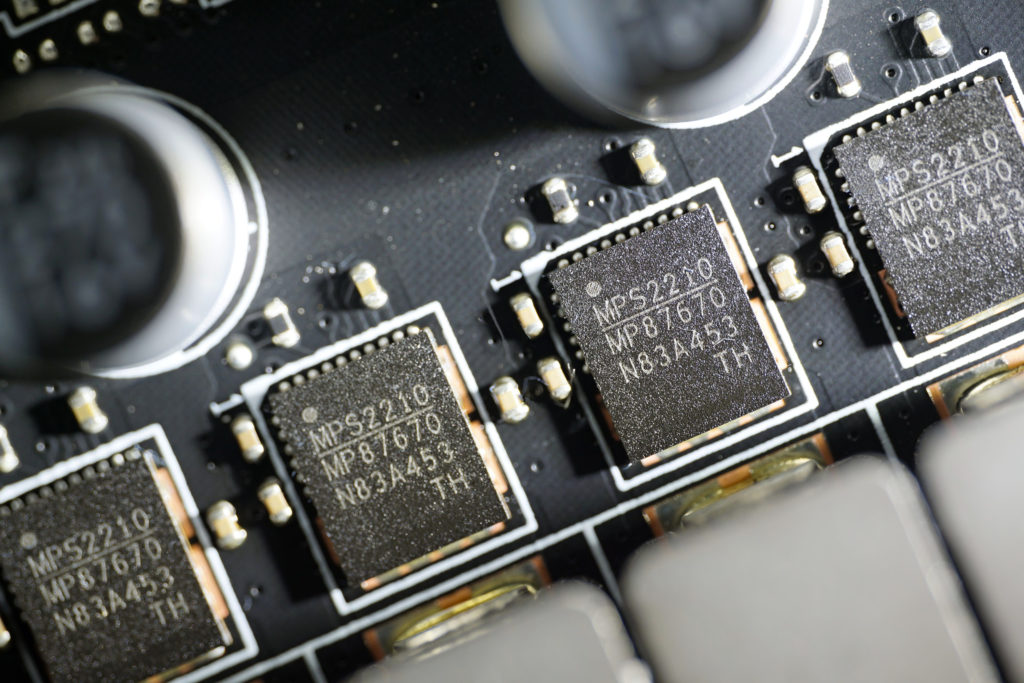
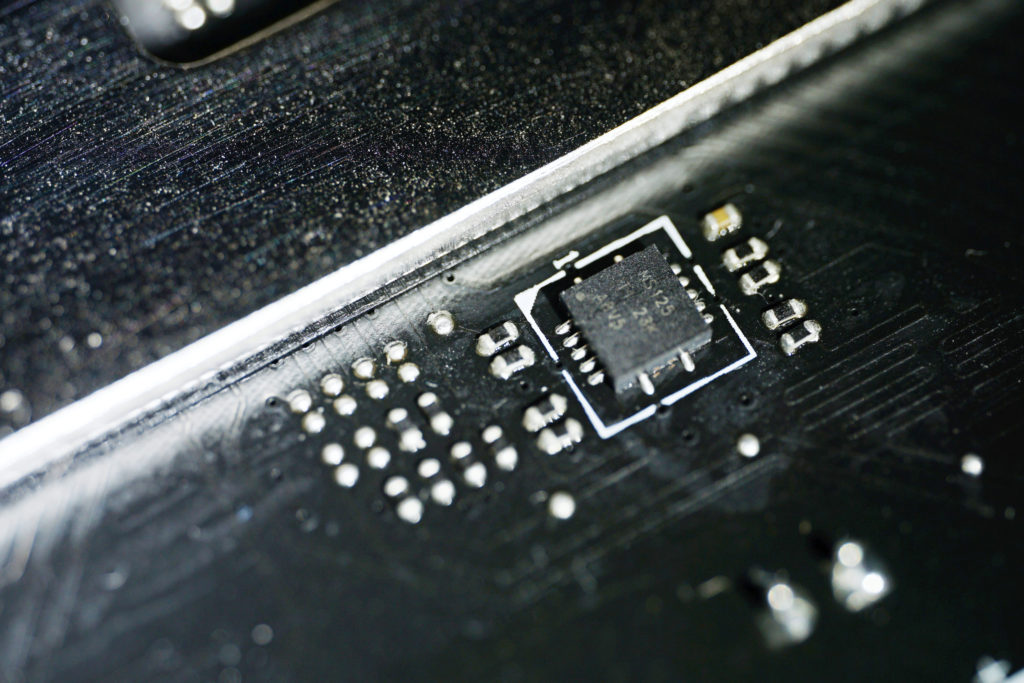

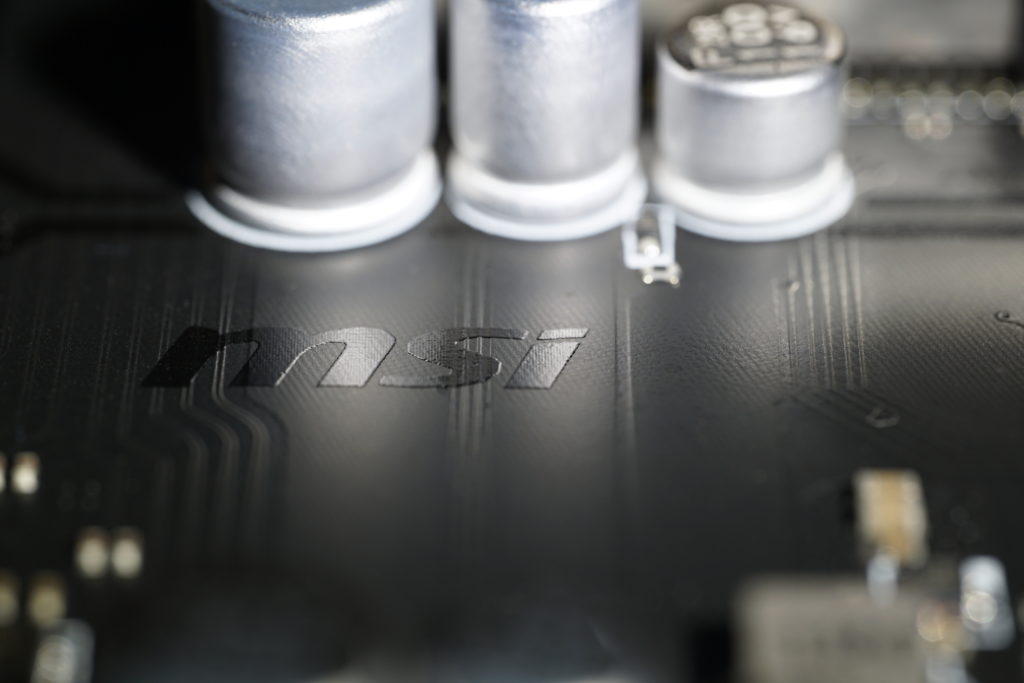






Hi hwcooling.net team, I would like to ask about the ALC4080 integrated sound card, I heard that many people have problems with it, such as crackling in the speakers or stuttering of the sound during videos and etc. Is this true or not? Can you advise me on this? Or would you rather buy the Asus TUF B650 Plus wifi? Thank you
We can answer a lot of questions, but the ones that require a proper analysis of the sound adapter are not part of it yet. Anyway, we are working on a test methodology, on the basis of which it will be possible to evaluate the characteristics of the audio. However, if difficulties are often discovered based on user experience, it is likely that there will be some issue. Whether the TUF Gaming B650-Plus is better/worse and on top of that without tests I also cannot judge. The only thing we can do is to compare the parameters… I’m sorry I didn’t give you much advice. :/
Is that mosfet temp your review mentions, something concerning? Paired with a 7800x3d, should there be issues down the road??
I tried to find more info about this, but only your website mentions this.
Hard to say. Who knows what (part of the processor) is being supplied through the voltage regulator at all. You probably can’t get this information from publicly available materials, although some more detailed VRM block diagrams should exist somewhere.
Anyway, this motherboard won’t have the slightest trouble with the Ryzen 7 7800X3D processor. It’s a relatively low-power processor, the Ryzen 9 7950X for tests has almost three times higher power draw. Of course, you still can not exclude that that what the controller is in charge of, just won’t require more intensive power supply with the R7 7800X3D…